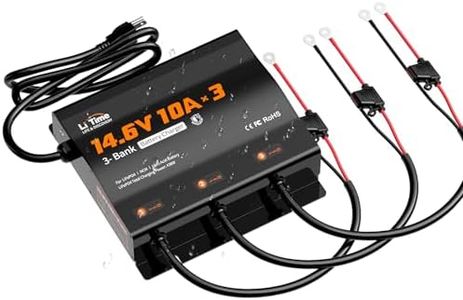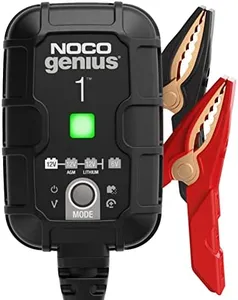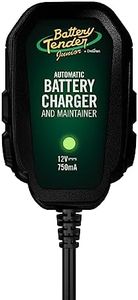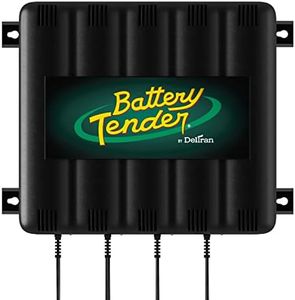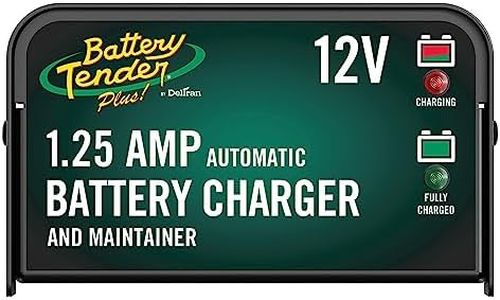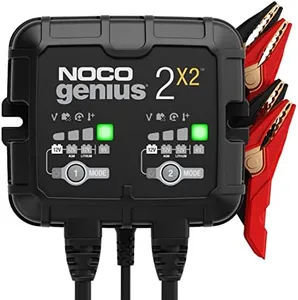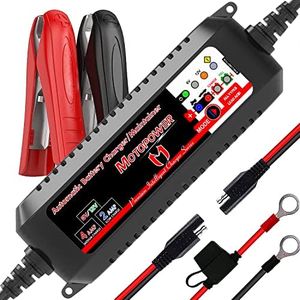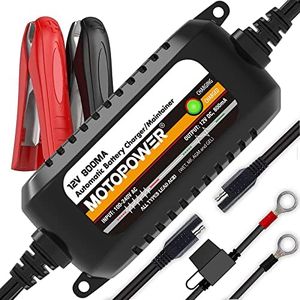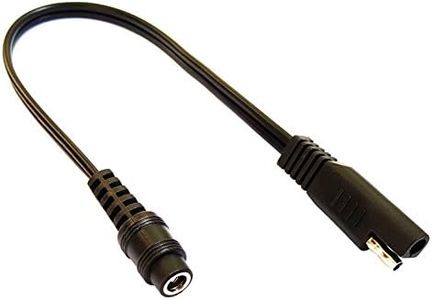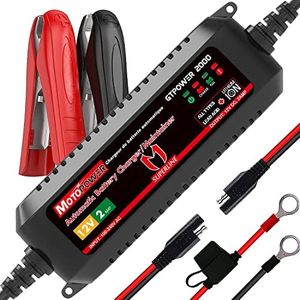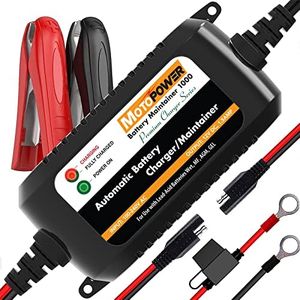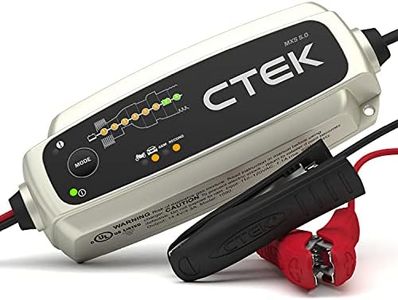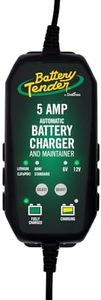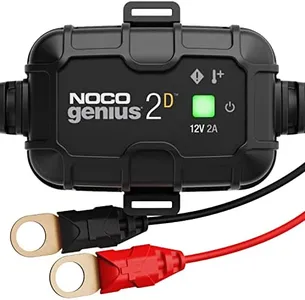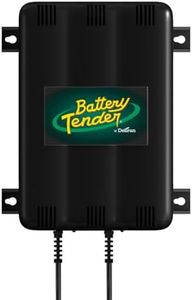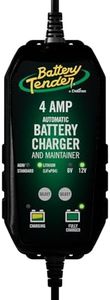We Use CookiesWe use cookies to enhance the security, performance,
functionality and for analytical and promotional activities. By continuing to browse this site you
are agreeing to our privacy policy
10 Best Battery Tenders 2025 in the United States
How do we rank products for you?
Our technology thoroughly searches through the online shopping world, reviewing hundreds of sites. We then process and analyze this information, updating in real-time to bring you the latest top-rated products. This way, you always get the best and most current options available.

Buying Guide for the Best Battery Tenders
Choosing the right battery tender is crucial for maintaining the health and longevity of your vehicle's battery. A battery tender, also known as a battery maintainer, is designed to keep your battery charged at an optimal level, especially when the vehicle is not in use for extended periods. To make an informed decision, you need to understand the key specifications and how they align with your specific needs. Here are the essential specs to consider when selecting a battery tender.VoltageVoltage is the measure of electrical potential provided by the battery tender. Most common battery tenders are designed for either 6-volt or 12-volt batteries, which are standard in most vehicles. It's important to match the voltage of the tender to the voltage of your battery to ensure proper charging. If you have a standard car, motorcycle, or boat battery, a 12-volt tender is typically what you need. For smaller vehicles like lawnmowers or some motorcycles, a 6-volt tender might be appropriate.
AmperageAmperage, or current output, indicates how quickly the battery tender can charge a battery. Lower amperage (around 0.75 to 1.25 amps) is suitable for maintaining a battery over long periods without overcharging it. Higher amperage (2 to 5 amps) can charge a battery faster but may not be ideal for long-term maintenance. If you need to keep a battery topped off while in storage, a lower amperage tender is usually sufficient. For quicker charging needs, a higher amperage model might be better.
Automatic ShutoffAutomatic shutoff is a feature that allows the battery tender to stop charging once the battery is fully charged. This prevents overcharging, which can damage the battery and reduce its lifespan. Look for a tender with this feature to ensure your battery is maintained at the optimal charge level without the risk of overcharging. This is particularly important if you plan to leave the tender connected for extended periods.
CompatibilityCompatibility refers to the types of batteries the tender can charge. Some tenders are designed to work with specific battery types, such as lead-acid, AGM, gel, or lithium-ion batteries. Ensure that the tender you choose is compatible with the type of battery you have. This information is usually found in the product specifications or user manual. Using a tender that is not compatible with your battery type can result in ineffective charging or even damage to the battery.
Safety FeaturesSafety features are critical to prevent accidents and ensure safe operation. Look for features such as reverse polarity protection, which prevents damage if the clamps are connected to the wrong terminals, and spark-proof technology, which reduces the risk of sparks during connection. Other useful safety features include short-circuit protection and over-temperature protection. These features are especially important if you are not experienced with handling batteries and chargers.
WeatherproofingWeatherproofing is important if you plan to use the battery tender in an outdoor or harsh environment. A weatherproof tender can withstand exposure to elements like rain, snow, and dust, ensuring reliable operation regardless of the conditions. Check the product specifications for an IP rating, which indicates the level of protection against water and dust. For outdoor use, an IP65 or higher rating is recommended.
Size and PortabilitySize and portability are considerations if you need to move the tender between different locations or store it when not in use. Compact and lightweight models are easier to handle and store. If you have limited space or need to transport the tender frequently, look for a model that is small and portable without compromising on the essential features you need.
Most Popular Categories Right Now
